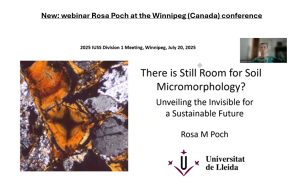This section aims to elaborate ideas, initiatives and any additional info on soil micromorphology applied to archeology. This section is led by Luca Trombino (University Milano, Italy) with the support of Selim Kapur. For any contribution, please write to luca.trombino@unimi.it .
Basic information : Soil micromorphology in archeology examines microscopic features of soil sediments, plays a pivotal role in unraveling the mysteries of the past. Through the intricate analysis of soil microstructures, archaeologists are able to decipher a wealth of information regarding ancient human activities, environmental conditions, and site formation processes.
One of the primary contributions of soil micromorphology to archaeology lies in its ability to provide detailed insights into the formation and stratigraphy of archaeological sites. By examining thin sections of soil samples under a microscope, archaeologists can identify microscopic layers, features, and disturbances within sedimentary deposits that may not be discernible to the naked eye. This enables the reconstruction of complex depositional histories, allowing researchers to understand the chronological sequence of events that shaped archaeological contexts.
Moreover, soil micromorphology aids in the identification of anthropogenic deposits and activity areas within archaeological sites. Microscopic analysis reveals subtle traces of human occupation, such as hearths, pits, postholes, and floor surfaces, which are integral to understanding past settlement patterns, subsistence strategies, and social organization. By correlating soil microstructures with archaeological artifacts and features, researchers can reconstruct ancient lifeways and interpret the socio-economic dynamics of past societies.
In addition to its significance in understanding human behavior, soil micromorphology contributes valuable insights into past environmental conditions and landscape evolution. Microscopic examination of soil sediments allows archaeologists to reconstruct paleoenvironmental parameters, such as climate fluctuations, vegetation patterns, and soil formation processes. This environmental data is essential for contextualizing human activities within their ecological settings and understanding the adaptive strategies employed by ancient cultures in response to environmental changes.
Furthermore, soil micromorphology plays a crucial role in site conservation and management. By identifying factors contributing to soil degradation, erosion, and contamination, archaeologists can develop strategies for the preservation of archaeological sites and the sustainable management of cultural heritage resources. Understanding the microscale processes affecting site integrity is essential for mitigating the impact of human activities, natural disasters, and climate change on archaeological remains.
In conclusion, soil micromorphology is a fundamental tool in archaeology, offering unparalleled insights into the complex interplay between humans, environments, and landscapes throughout history. By delving into the microscopic world of soil sediments, archaeologists can reconstruct past societies, unravel ancient mysteries, and preserve our cultural heritage for future generations.

